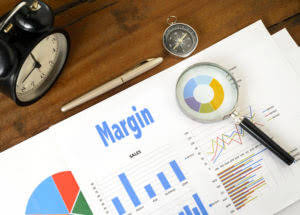California Cannabis Co Gold Flora Reports 150% YoY Increase In Q1 Gross Profit, Trims Loss Sequentially

It also includes any indirect costs of storing raw materials. Food has a lower profit margin than alcohol because it isn’t marked up as much as alcohol is. In addition, you now have to factor in the cost of maintaining a kitchen, hiring skilled food service workers, getting the right licenses and more. If you don’t know the benchmark for brewpubs in your area, you can compare it to restaurants; azcentral reports full-service restaurants achieving margins between 3% to 5%. Let’s assume you run a brewery and sell your beer to your taproom for $100 per quarter barrel keg. You sell a pint for $6 and total sales on a quarter barrel come to $372.
Smart WiFi Marketing
The PTR, price to retailer, is the amount the distributor charges to the retailer. Every price in the sales cycle will ultimately influence the price of the beer on the shelf for the customer. Remember, every dollar of gross profit may return to you four times, six times, eight times or more. A small investment in time and resources will pay off big time when you decide to sell your brand distribution rights. Further, and most importantly, the value measurement isn’t on net profit, it is on gross profit. Therefore, you can break-even, or lose money on self-distribution and still drive the value of your brand distribution rights through the roof.

How to read a brewery’s profit and loss?
However, it’s important to note that these margins can fluctuate, and achieving higher profitability often requires strategic marketing, cost control, and efficient operations. Economist Richard Thaler found that customers were willing to pay more for a Budweiser if they knew it was coming from an upscale hotel versus a run-down grocery store. This means that you should https://www.bookstime.com/ choose the right mix of retailers to stock your products. If you’re selling through a niche brewpub, an exclusive online reseller or in your own specialty store, you can command higher prices. Plugging these numbers into the pour cost formula, Daisy determines that in June, her pour cost was 5%. In other words, for every $1 of beer she sells, she makes $0.95.
Expert Guidance for Business Optimization
- Globally, the US generates the most revenue from beer sales.
- Using the previous example, Eddy knows he has an overhead service charge of $1.
- For example, your accountant might prepare a simplified version of your profit and loss to submit to the IRS as part of your annual tax return filing obligations.
- Let’s say our hypothetical 300 BBL taproom-only brewery sells pints for $6.
- So, even though it looks like they’re making good money, a big chunk of it goes right back into the brewery.
The P&L of a brewery, like any other business, includes all revenues and expenses over a specific time period. To build a P&L we first add all revenues at the top (total revenues) deduct all expenses (COGS, labor costs, rent, etc.) down to net profit. Lightspeed studied more than 13,000 retailers across different industries and countries and found that the average gross profit margin is 53.33%. However, when comparing across industry verticals, alcoholic beverages had some of the lowest margins at 35.64%. Historically, brewers have focused on on-trade distribution because it yields higher profit margins. In 2019, off-trade sales trumped on-trade sales by 700,000 pints in the UK.
So, how do you price your products?

This is a common pricing strategy because it’s so straightforward. You add up all your production costs, fixed and variable, and then apply a markup percentage to get the final price. For example, it costs you $30 to make a six-pack of beer and you want to make a profit of $15 on each sale. In addition to using the right software, you need to conduct regular stocktakes (and do them right).

Your gross profit margin is 73%, meaning that you’re retaining 73% of your revenue after accounting for costs. If you run different types of business models – for example, if you have both a brewpub and a production facility – make sure you calculate gross margin for each one separately. You should also be tracking margin for each product you sell — that’s how you’ll know which brews are the most cost-effective and which aren’t performing so well. Because of scale, a successful large-scale brewery will always bring in more profit than a nano brewery.
EBITDA per unit
It mostly includes raw materials (typically ~30-35% of sales) and packaging costs (~10% of sales). The profit and loss is undeniably the most important of all financial statements as it shows the company’s revenues and expenses over a period of time (a month, a quarter or a year). If you’re running a brewery, you might have heard of the profit and loss statement (or “income statement”). One of the biggest mistakes brewers make is not offering enough price points, especially when premiumisation is key in the industry.
Retail Sales are Essential
- It’s similar to cycle time in that it tracks the efficiency of production.
- It will also report on your margins across each product so you have a full picture of your performance.
- A brewery tour is a guided experience where visitors learn more about your brewery.
- You sell a pint for $6 and total sales on a quarter barrel come to $372.
All the revenue and expenses of the taproom should be listed and have their own accounts. Likewise, all the revenue and expenses of the distribution business should have its own accounts. A brewery accounting common mistake that breweries make is to combine all the results together. This makes it difficult if not impossible to determine exactly what the profit is for taproom vs. distribution.
- You need to sell these leftover packs of beer at a heavily discounted price in order to move the stock and avoid a write-off.
- But also, if your brewery provides food, you can easily target beer tasters with food menus for extra profit.
- Is this EBITDA reasonable and is it enough to cover the debt on the taproom business?
- Use of Non-GAAP Financial MeasuresThis press release includes both financial measures in accordance with U.S. generally accepted accounting principles (“GAAP”), as well as non-GAAP financial measures.
- Joshua will happily pay $12 for a pint because he loves the high-quality craftsmanship.
Spreadsheets are a basic, free method that may suit new and small brewers. However, it can soon become unwieldy managing multiple spreadsheets as the brewery grows. In London, it will cost you US$6.44 for a pint of beer in an “expat” neighborhood pub according to Finder. You appeal to retailers, providing products for resale and letting them price alcohol accordingly. You appeal to drinkers, who can purchase from you directly – skipping the third-party resale. I am a passionate beer connoisseur with a deep appreciation for the art and science of brewing.
Similarly, Eli Lilly also saw its operating margin expand from 28.9% in 2020 to 31.6% in 2023, and 32.9% for the last twelve months period. Although the company increased its investments in research and development, with total R&D expenses rising 53% between 2020 and 2023, it cut its SG&A costs. The 36% rise in SG&A and R&D expenses combined was still lower than the 39% revenue growth over this period. The profitability of a brewery can be influenced by numerous factors, including its size, location, business model, and the quality of its products.
